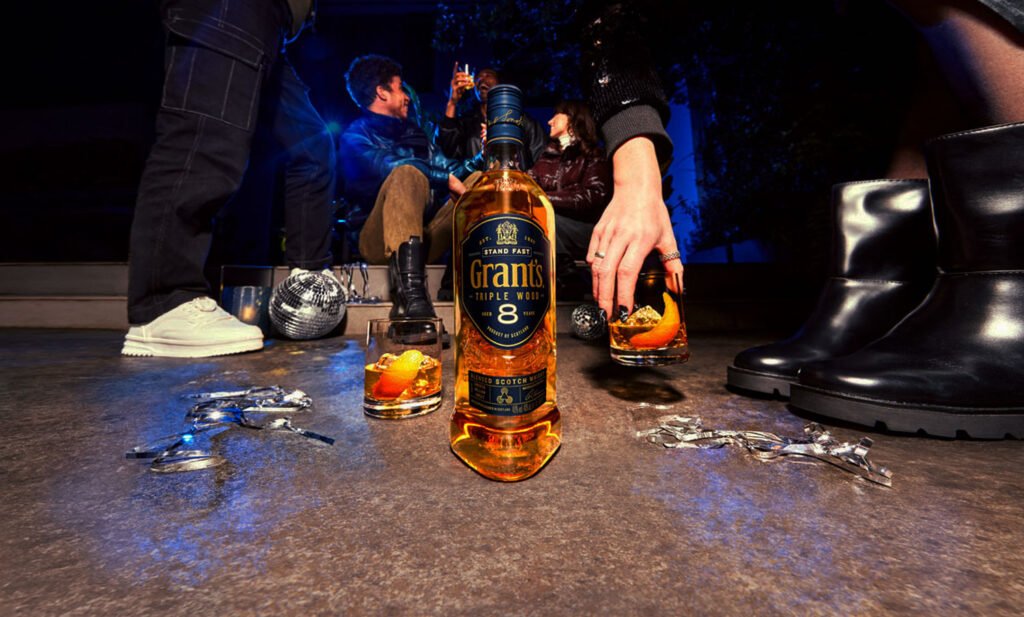When it comes to whisky, age is often seen as an indicator of quality. Many whisky enthusiasts will tell you that an older whisky is usually better, as it has had more time to mature and develop deeper flavors. However, there are notable exceptions to this rule. Some whiskies are highly sought after for their age statements, while others are designed to be flexible in terms of age, with their quality remaining consistent across different bottlings, regardless of the specific age. So, what makes age so important for some whiskies, and why are other whiskies less dependent on aging for their quality?
Let’s explore the factors that influence the importance of age in whisky, why some whiskies are more flexible, and how aging affects the whisky’s final flavor profile.
1. The Role of Aging in Whisky
Aging is the process in which whisky matures in wooden casks, usually oak. Over time, the whisky interacts with the wood, which imparts various flavors, tannins, and color. The longer the whisky stays in the cask, the more it absorbs from the wood and the more its flavor profile develops. Aging also allows the whisky to oxidize, mellowing the harshness of the alcohol and enhancing the drink’s complexity.
However, age is not the only determinant of whisky quality. In fact, excessive aging can sometimes lead to over-oaked or over-matured whiskies, which can have a woody, dry, or overly tannic taste. Therefore, the balance between age, cask type, and climate is crucial in determining a whisky’s final character.
Key Benefits of Aging Whisky:
- Smoother texture: Longer aging allows for a more mellow, smooth mouthfeel, as the harshness of the alcohol is softened by the wood interaction.
- Complexity: Older whiskies tend to have more complex flavor profiles, with layers of fruit, spice, oak, and smoke.
- Depth of Flavor: Ageing contributes to deeper flavors, especially in sherry-cask-aged whiskies, which develop rich fruit and nutty notes.
- Color: The longer the whisky ages, the more it picks up color from the barrel, becoming darker and richer.
2. Why Age Matters for Some Whiskies
For certain whisky styles, age is a crucial factor that heavily influences the quality and flavor. Typically, these whiskies are produced in regions with temperate climates that allow for slower maturation, such as Scotland and Ireland.
Single Malt Scotch Whisky
One of the most famous examples of age-dependent whisky is single malt Scotch whisky. The age statement on a bottle of single malt often indicates the minimum number of years the whisky has spent maturing in oak casks. Some distilleries, especially those in Speyside, Islay, and the Highlands, produce whiskies that require time in oak barrels to develop their characteristic complexity. These whiskies often evolve in both flavor and mouthfeel as they age, making their age a significant point of distinction.
- Example: Macallan 18 Year Old – Macallan is known for producing aged whiskies that develop rich flavors of dried fruit, spices, and sherry cask influence over time. The 18-year-old expression, for instance, showcases the depth that comes with extended aging.
Sherry Cask-Aged Whiskies
Whiskies aged in sherry casks tend to develop a rich, deep, and full-bodied flavor profile, with notes of dark fruits, chocolate, and spices. The interaction between the whisky and the sherry-soaked oak cask is crucial to developing the distinctive flavor profile. Therefore, age is often directly correlated with the depth and complexity of the flavors.
- Example: GlenDronach 21 Year Old – GlenDronach’s sherry cask-aged whiskies showcase the intricate flavors that come with long aging. As they mature, the whisky picks up deeper notes of raisin, toffee, and spices.
Bourbon and Rye Whiskies
In the case of bourbon and rye whisky, aging is still important, though the emphasis is often on balance rather than extended maturation. Because these whiskies are aged in new charred oak barrels, the maturation process tends to extract intense flavors from the wood relatively quickly. While longer aging can lead to smoother, more complex flavors, many bourbon and rye expressions are designed to showcase a vibrant and spicy character that remains relatively consistent across different age statements.
- Example: Maker’s Mark – Maker’s Mark Bourbon doesn’t rely on long aging to develop its flavor. Instead, it’s known for its smooth, sweet profile, with caramel, vanilla, and oak notes, even though it’s typically aged for around 6 to 7 years.

3. The Flexibility of Age in Certain Whiskies
Not all whiskies require extended aging, and some whisky styles are designed to be enjoyable and consistent at various ages. These whiskies may be crafted for immediate enjoyment, or their flavor is intentionally balanced to allow for flexibility in terms of age.
Blended Whisky
Blended whiskies, such as Johnnie Walker, Chivas Regal, and Ballantine’s, typically consist of a combination of single malts and grain whiskies. The blending process allows for the creation of a more consistent and balanced flavor profile, with less emphasis on age. In fact, many blended whiskies do not have a specific age statement, and instead, they are labeled with expressions like “12 Year Old”, “Gold Label”, or simply by the brand’s name.
Because these whiskies combine both younger and older whiskies, the overall flavor is designed to be consistent across batches, and the age statement is less of a defining factor.
- Example: Johnnie Walker Black Label – With a blend of whiskies aged anywhere from 12 to 15 years, Johnnie Walker Black Label is crafted to deliver a consistent flavor experience, characterized by smoky, spicy, and sweet notes. The age of each individual whisky in the blend may vary, but the result is a balanced, harmonious whisky.
Vatted Malt or Blended Malt Scotch
In some cases, blended malts (or vatted malts) can offer a flexible aging profile. These whiskies are made from a blend of single malts from different distilleries, but unlike traditional blended whiskies, they don’t contain any grain whisky. The age of the whiskies used in the blend can vary, so the overall flavor is meant to be balanced rather than dependent on a specific age.
- Example: Compass Box Great King Street – This blended malt whisky showcases a blend of different aged single malts, providing an excellent example of how flexibility in aging can lead to a versatile and well-rounded whisky.
Younger Whiskies (Under 10 Years)
Many modern whiskies, particularly those designed for mass-market appeal, are intended to be younger and more approachable. These whiskies don’t necessarily require long aging to develop their flavor, and they are made for consumers who want a quick, affordable, and enjoyable whisky experience. Some distilleries now focus on crafting faster-maturing whiskies, where the maturation process is accelerated through specific techniques like finishing in different cask types or innovative aging methods.
- Example: The Glenlivet 12 Year Old – The Glenlivet 12 is a younger whisky with a fruity, floral profile, designed to be approachable and easy to drink without relying on extensive aging.
4. Why Some Whiskies Don’t Require a Specific Age Statement
Whiskies without an age statement (NAS) are increasingly common in today’s whisky market. These whiskies are often crafted to showcase consistent quality and flavor across different bottlings, even if the individual whiskies within the bottle vary in age. Here are a few reasons why some whiskies don’t require an age statement:
- Blending Technique: The ability to combine different aged whiskies allows producers to create a consistent flavor profile without needing to rely on a single age.
- Innovation: Some distilleries choose to experiment with cask finishes, special maturation techniques, or other methods that allow for younger whiskies to showcase depth and complexity.
- Consumer Preferences: In some cases, younger whiskies may appeal to modern consumers who value freshness, vibrancy, and approachability over the traditional emphasis on age.
5. Conclusion: The Role of Age in Whisky
The age statement on a bottle of whisky can be an important factor in determining its flavor profile, but it’s not always a guarantee of quality. For certain whisky styles, particularly single malt Scotch and sherry-cask aged whiskies, age is a crucial factor that contributes to the complexity, richness, and mellowness of the whisky. However, blended whiskies, younger whiskies, and innovative NAS expressions show that aging is only one of the many factors that influence the final product.
Ultimately, the best way to choose a whisky is by considering your own preferences and the flavor profile you enjoy. Whether you prefer an older, more complex whisky or a younger, more vibrant expression, there is a whisky out there for every palate. It’s all about finding the right balance for you. Cheers!































